Restaurants have to cater to all types of demographics, special needs and dietary restrictions. Having a helpful visual diagram that showcases the different ways restaurants can best serve the more challenging patrons can be a gift. Restauranteurs may even want to consider sending this out to their front of house as a helpful reminder of tricks and tips they can use to keep everyone from young children to seniors, special needs and dietary restrictions happy.
Blog posts from July, 2015
For those unfamiliar with melamine, this type of material is perfect for banquet halls, hotels, caterers and restaurants looking to serve family style or food buffet service. Because porcelain breakage or chipping can become such a costly problem, melamine can be the perfect solution to this issue. One of the issues that causes the hospitality market often turns their nose up on melamine serving trays is the fact it often looks too plastic. We’ve solved that problem by meticulously picking our melamine supplier who manufactures melamine serving trays that are almost identical in look to porcelain.
To date, we’ve stocked melamine serveware in larger sizes such the 20” square melamine platter. Now available, and new to our inventory is 3 new melamine pieces.
21” x 6” Rectangular Melamine Platter
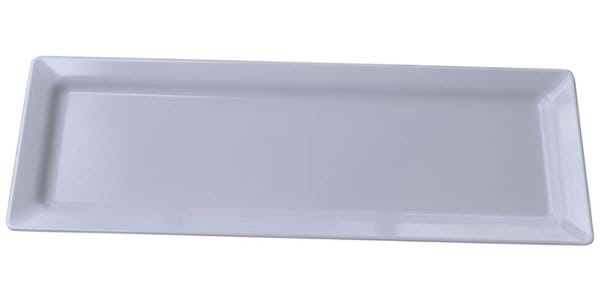
Sku: M0970 Weight: 2.94lbs
13” x 8” Rectangular Platter
Sku: M0965 Weight: 1.80lbs
2.6" Melamine Dipping Bowl
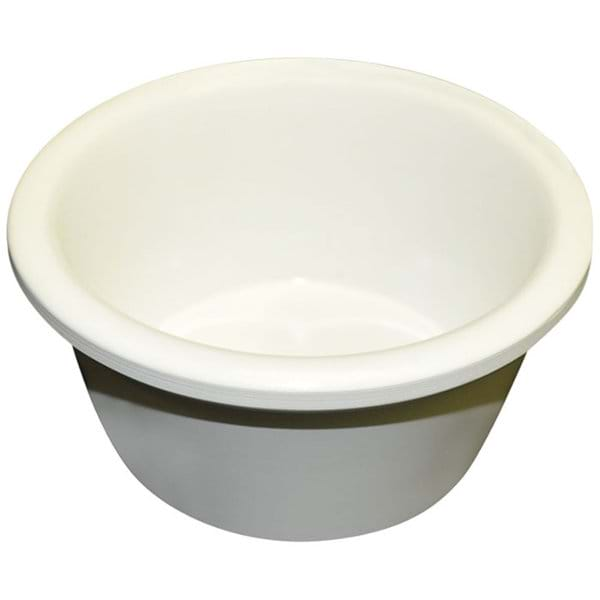
Sku: M1125 Weight: .1lbs
All these pieces are durable and break resistant, commercial dishwasher safe and lightweight.
If you’re interested in a quote including shipping:
We recently had a customer ask us a question that we hadn’t been asked before and I thought it was a perfect opportunity to figure out the answer. Ivory tablecloths either to use in a restaurant, hotel or banquet hall, or rent out to customers, inevitably will face staining of all sorts. While optimally the best time to deal with a stain is as soon as it has happened, the odds of that happening are extremely slim. Restaurants, hotels and banquet halls can’t yank the tablecloth off the table until the cheque is settled or the event is complete, and party rental companies often don’t receive their linen rentals back until the following day of the special event. Our customer asked “can ivory tablecloths be bleached?” and so we sought to find out whether they can be.
Step 1:
Red wine is spilled on the tablecloth (what a waste of red wine!)
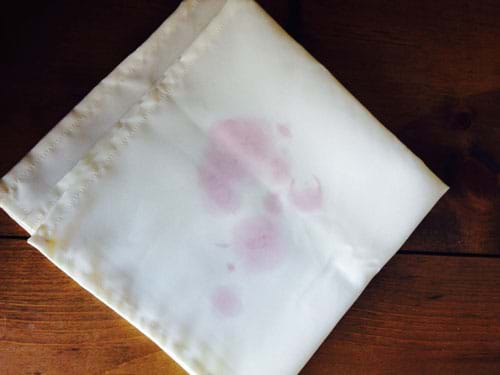
Step 2:
Red wine stain is left overnight to re-create a possible customer scenario
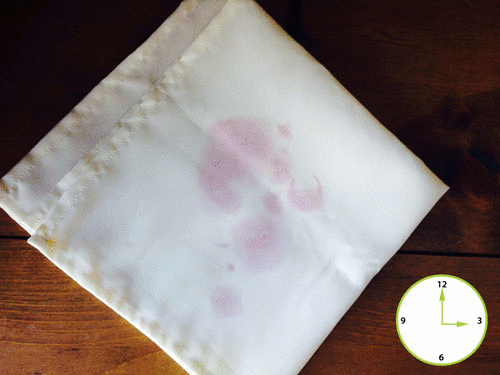
Step 3:
Put ivory tablecloth in washing machine. I have a washing machine with a built-in bleach dispenser so detergent was added to built-in detergent dispenser and 1/3 cup bleach was added to the built-in bleach dispenser. Setting was set to hot water. If you don’t have a built-in bleach dispenser machines, pour the bleach directly into the wash water after the wash cycle has begun but before adding your clothes. This will ensure the bleach is evenly dispersed through the water and not just onto the tablecloth in spots.
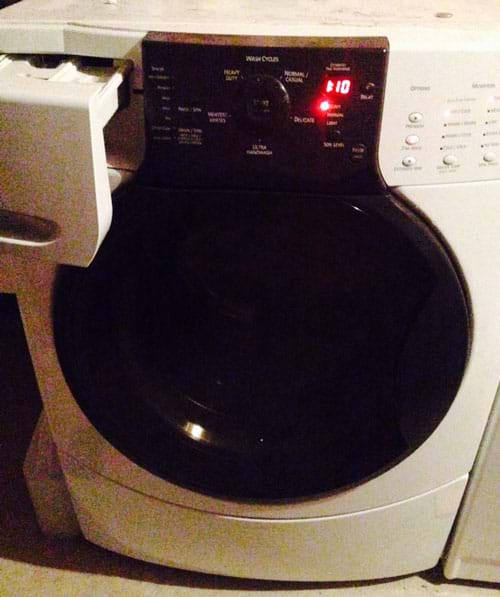
Step 4:
Here’s what the ivory tablecloth looks like when bleached.

So as you can see ivory tablecloths can be bleached!
Have you had a different result bleaching ivory tablecloths? Let us know by tweeting us @NatlEventSupply, post on our timeline on Facebook, our page on LinkedIn or Google
 It’s not a big secret that the restaurant industry is full of sudden closures from new and cornerstone establishments. According to the NPD Group “853 restaurants closed their doors between 2012 and 2013, the majority of which were independent establishments.” So it begs the question – why do some restaurants fail while others succeed? How can new foodservice operators and even existing foodservice operators ensure their establishment doesn’t go under as well? We take a look at some of the reasons why failure occurs as heard through this Reddit discussion in the hopes we can help others avoid similar issues.
It’s not a big secret that the restaurant industry is full of sudden closures from new and cornerstone establishments. According to the NPD Group “853 restaurants closed their doors between 2012 and 2013, the majority of which were independent establishments.” So it begs the question – why do some restaurants fail while others succeed? How can new foodservice operators and even existing foodservice operators ensure their establishment doesn’t go under as well? We take a look at some of the reasons why failure occurs as heard through this Reddit discussion in the hopes we can help others avoid similar issues.
“…by far the biggest reason for failure is poor staff management. A lot of chefs, especially, have a bit of a penchant for poor interpersonal skills. That makes your line a revolving door, lessens food quality, and increases personnel costs due to training time and onboarding procedures.
Basically, it's super important to be able to keep your employees paid and happy. Seems obvious, but at some places it's the first thing to go after the fun of a being a new restaurant fades away.”
- WitOfTheIrish
“A big problem is that not all good chefs do not have the skill set to be good restaurateurs.
Chefs go to school to learn how to cook. So much more goes into running a restaurant.
HR skills: how to hire and train a team. Comply with myriad laws to avoid lawsuits. Delegate management tasks. Set pay scales and job descriptions. When to fire an employee. Finance: how to make a realistic budget and business plan. What gross margin do I need given fixed costs like rent & utilities. Taxes and how and when do I pay them (FICA, unemployment, sales), credit card providers are like used car salesmen, how to get a decent deal, How much working capital do I need? IT: what system to buy, how to keep it running. Buying: how to buy supplies, how much of X to have on hand so that we don't run out, but pretty much always have it in stock, but perishables don't perish.”*
- Wilawah
* Note: Another Reddit user made a good point that any culinary school worth its salt teaches all of the above business skills required to run a restaurant. What I’d argue is that a lot of chefs who become restaurateurs aren’t necessarily culinary school graduates. A lot of Chefs work their way up from dishwasher / busboy with a love and passion for cooking and are not always fortunate enough to have a great mentor to guide them in the business aspects of running a restaurant. Another large number just want to open a restaurant because they think it’ll be a good business venture.
“Poor staff management is rampant. I don't work in a restaurant but almost my whole family does, and it's always horror stories of incompetent people, people who steal, are lazy, rude, etc. whoever does the hiring there seems to drop the ball half the time.”
- Zoklar
“It has been proven through numerous studies that a "revolving-door" staff will lead to more errors, lower performance, and poorer service. This applies to all fields including healthcare, restaurants, and hospitality.”
- newtothelyte
“Success? I've only worked in a couple restaurants, but as a lover of food and the dining experience, this is my take.
*#1 You have to get people in the door. The biggest part of this is word of mouth. It used to be newspaper reviews, but these days it has to be social media. Issue coupons, have specials, hang a sign bigger than Jesus, just get people in the door. Location can be a drawback here. Half the restaurants people tell me that went out of business prompt me to say "What? I didn't know there was a restaurant there." If that's your restaurant, you were doomed to fail.
*#2 Once people are in the door, you have to give provide them with a good experience. Food is only a part of this! Seating should be prompt. Staff should be friendly but not chatty. Even if the food is mind-blowingly great, it should provide a value to the customer. People like to experience a restaurant. Don't be boring. Don't be annoying. Don't be dirty. Don't suck. The restaurant is the golden platter that the food lays upon. Try to make it special.
*#3 The staff. Management has to have a serious head on its shoulders. Kitchens are hotbeds of human drama. When I worked in a kitchen, the staff was having sex with the staff. The waitresses were doing coke in the bathroom. The dishwasher was selling weed out the back door. It's chaos. The management has to have the reins of that rodeo. They have to reward the good and trim the bad. It has to be harsh but fair. Not many people fit the mold of a restaurant manager. Things can go south very, very quickly.
*#4 The food. I've put up with restaurants which failed on points 1 through 3 simply because I love their food. You have a restaurant. You are allowed to try to amaze me with food. You are not allowed to serve cold, unseasoned, dirty, nasty, average bullshit. And be honest. If a menu item sucks, cut it. I hate restaurants where the menu is too big. No cook or chef can do everything well. Make it narrow, but special. Don't try to be everything to everyone. If the people love it, listen to them and move in that direction. Do what you do, and do it well.
If you meet all those criteria, I may visit your restaurant more than once.”
- my_cat_joe
“I am almost convinced that restaurants don't fail, locations fail. I have been to plenty of restaurants that should be failing that are thriving because of their location and conversely plenty of restaurants that should thrive that do not because of the location. The location ties in to the demographic you will be serving, the rent or cost of ownership, the availability of goods and staffing, the amount of traffic and accessibility (ie. adequate parking, public transport, foot traffic), and very importantly what other establishments will be competing.
Sure everything else matters, a lot, but without a good or at least acceptable location any business especially the restaurant can be doomed from the get go.”
- shakedownshakin
“…Location makes a big difference.
-Even with good location, if your food is crap you can still fail. I've seen it happen many times in the BX food court area. It's not a guaranteed fail, but it definitely won't help things.
-Poor customer service can help contribute to a business failure. You can somewhat overcome that with excellent food. Usually if your customer service isn't up to par than your kitchen/food isn't either. Again there are exceptions, but those (from my experience) tend to be few and far between.
-Pricing can put people off as well. High prices in the wrong location will bring in fewer customers. Word of mouth can spread to bring people in. However it is harder to do.
-Fads can kill/severely hurt a place as well. You can open up a place when a fad hits. Then when everyone decides they're tired of it, you're stuck if you don't change. Which can be a difficult thing to do for some. Especially if it is a whole new concept.”
- Geawiel
“A lot of small businesses fail, its not just restaurants. Being able to cook tasty food is rarely the only thing that makes a restaurant succeed. At the end of the day, a restaurant is still a business and needs the fundamentals to succeed. Workflow, budgeting, marketing and so on. If you are not working on the restaurant as a business and working in the restaurant then more than likely it wont make it. (Work on your business not in your business).”
- clear831
Do you agree with the reasons above? Let us know by tweeting us @NatlEventSupply, post on our timeline on Facebook, our page on LinkedIn or Google.
Wedding colour trends are at the forefront of every mind related to the wedding industry. The foremost colour authorities choose the colour of the year, high fashion and home décor helps to set the trends and it bleeds into the wedding industry. What’s interesting to see is that everyone’s always interested in the trendiest colour of the season and not what’s been trendy across many different years and thus has staying power. A study like this is particularly important to vendors selling to the wedding industry such as party rental companies as it helps determine the colour choices they should be making investments in that will get them the biggest return on their investment and even better, the most rental turns possible.
I found this infographic that visually showcases the wedding colour trends over the past 15 years. It’s an illuminating graphic that also brings to light the fact that colour choices for brides are exploding now. There’s more colours to choose from than ever before. Check it out below:
What colour trends are you seeing? Let us know by tweeting us @NatlEventSupply, post on our timeline on Facebook, our page on LinkedIn or Google.


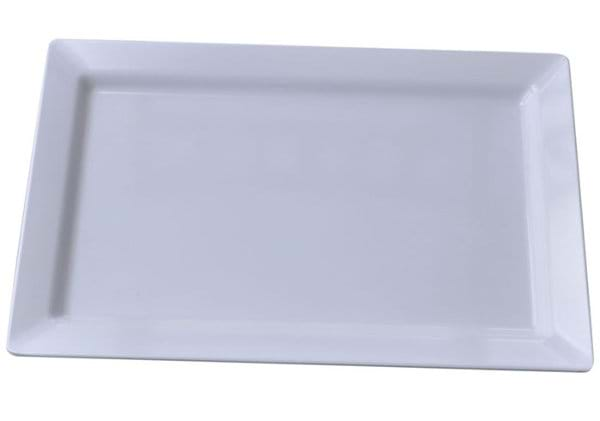

Do you have any tips that weren’t included? Share with us by tweeting us @NatlEventSupply, post on our timeline on Facebook, our page on LinkedIn or Google.